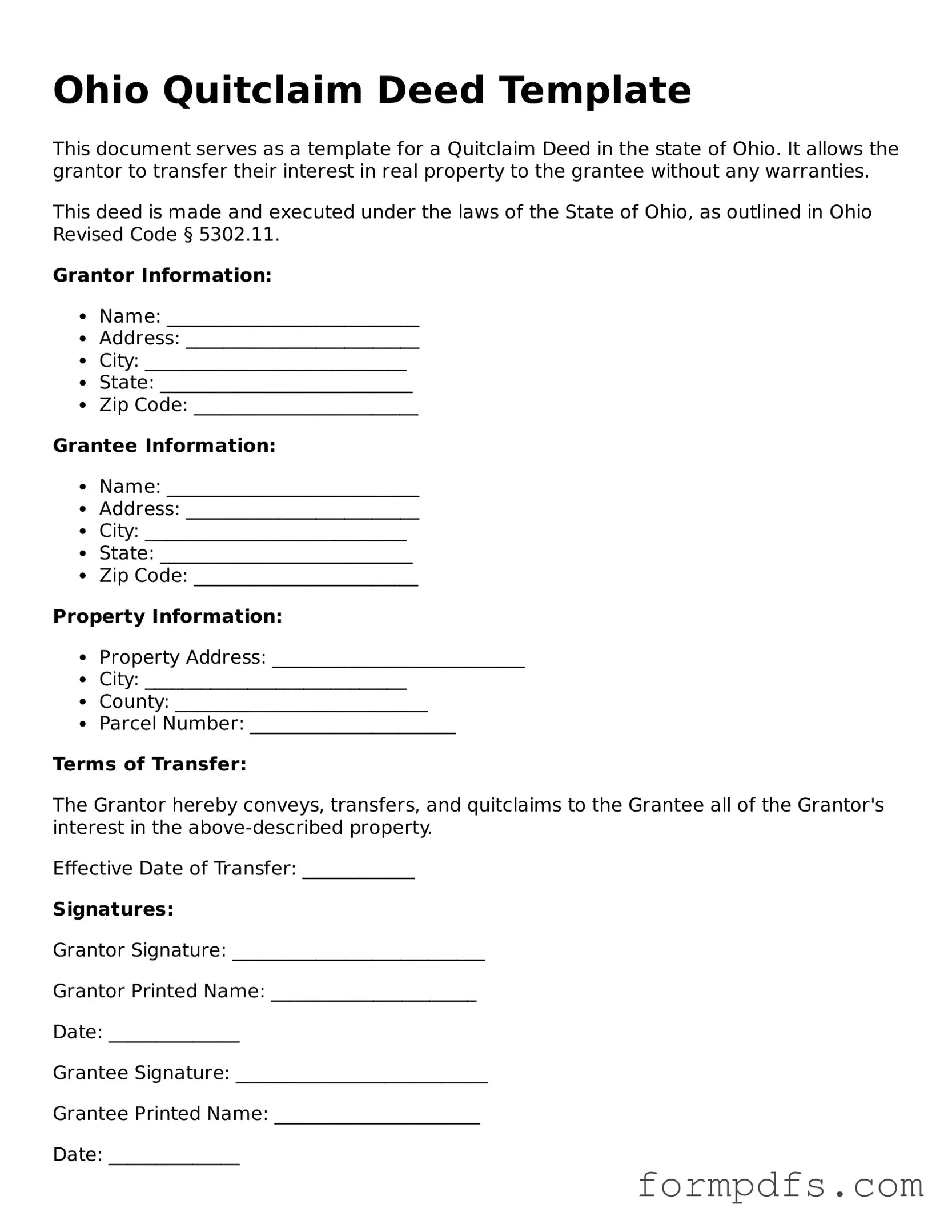What is a Quitclaim Deed in Ohio?
A Quitclaim Deed is a legal document used to transfer ownership of real estate from one person to another in Ohio. Unlike a warranty deed, a quitclaim deed does not guarantee that the property is free from liens or other claims. The person transferring the property, known as the grantor, simply relinquishes any interest they may have in the property to the recipient, known as the grantee. This type of deed is often used between family members or in situations where the parties know each other well.
How do I complete an Ohio Quitclaim Deed?
To complete a Quitclaim Deed in Ohio, you will need to include specific information. Start by identifying the grantor and grantee, including their full names and addresses. Next, provide a legal description of the property being transferred. This description can typically be found on the property’s tax records or previous deeds. After filling out the form, both parties must sign it in the presence of a notary public. Finally, the deed should be filed with the county recorder's office where the property is located to make the transfer official.
Are there any fees associated with filing a Quitclaim Deed in Ohio?
Yes, there are typically fees associated with filing a Quitclaim Deed in Ohio. These fees can vary by county but generally include a recording fee for the deed. Additionally, if the property is being transferred as part of a sale, there may be other costs, such as transfer taxes. It’s a good idea to check with your local county recorder’s office for the exact fees and any other requirements that may apply.
Can a Quitclaim Deed be revoked in Ohio?
Once a Quitclaim Deed is executed and recorded, it generally cannot be revoked. The transfer of property is considered final. However, if there are specific circumstances, such as fraud or undue influence, it may be possible to challenge the validity of the deed in court. If you believe you have a valid reason to contest a Quitclaim Deed, consulting with a legal professional is advisable to explore your options.
